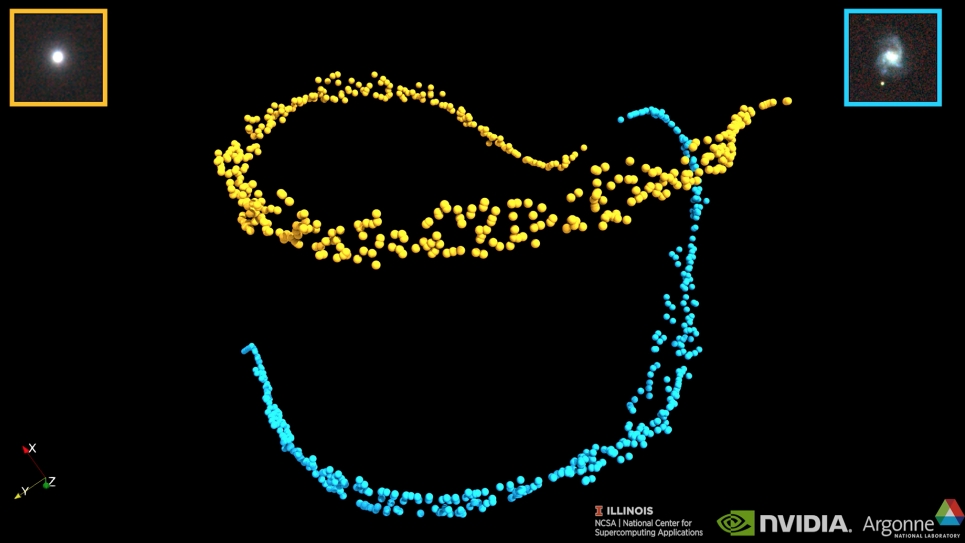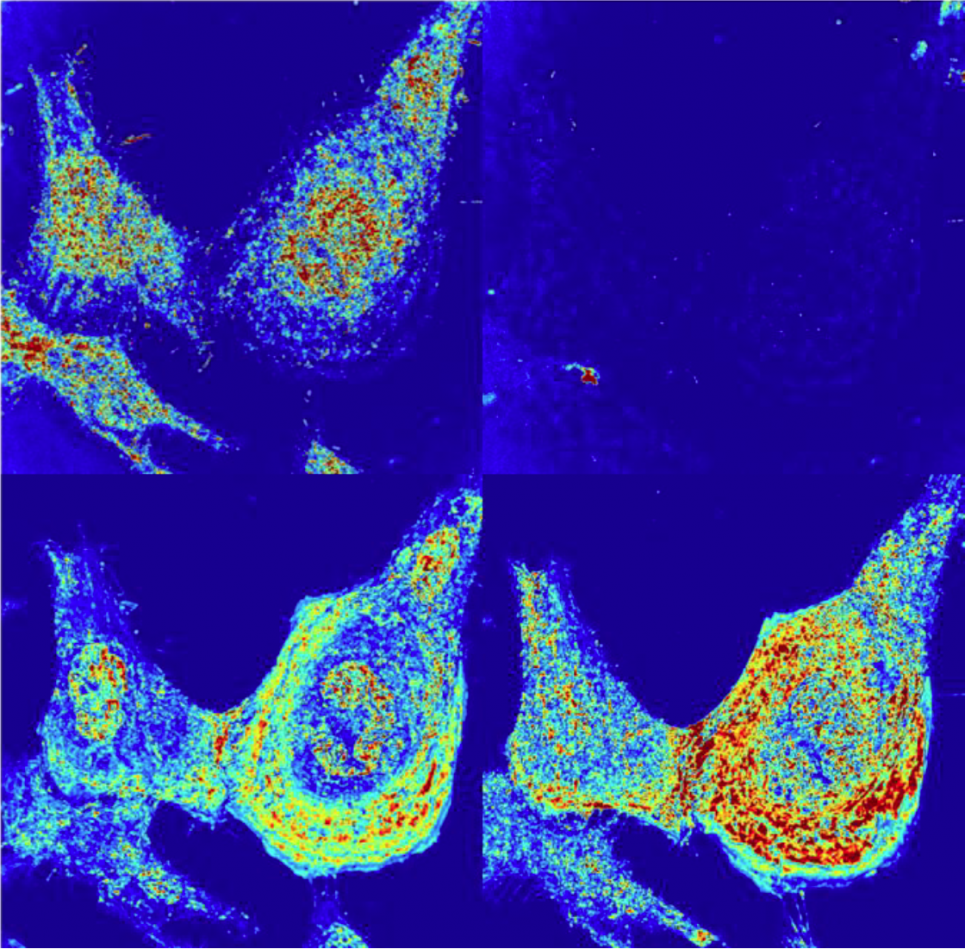Supercomputers at the U.S. Department of Energy’s (DOE) Argonne National Laboratory enabled numerous advances in science and engineering throughout 2019, with researchers producing scores of impactful studies and publications across scientific disciplines.
Projects supported by the Argonne Leadership Computing Facility (ALCF), a DOE Office of Science User Facility, combine traditional simulation-based approaches with cutting-edge data and machine learning techniques to accelerate discoveries and innovation.
The ALCF publishes a Science Report on an annual basis to highlight some of its user community’s most remarkable achievements. As 2020 approaches, we take a look back at some of the noteworthy research accomplished at the ALCF throughout the last year.
Breakthroughs in protein structure
This project, led by University of Washington researchers, is advancing protein structure capabilities to enable the design of synthetic mini-protein molecules, known as peptides, in order to treat an array of diseases and medical conditions. Breakthroughs in protein structure were detailed in a Nature article.
Principal Investigator (PI): David Baker, University of Washington
Improving muon magnetic moment values
The muon is a heavy cousin of the electron. Its magnetic moment is an intrinsic property that has been measured experimentally and computed to high accuracy. However, experimental measurement and computed value disagree by three standard deviations, perhaps suggesting the need for a new theory. This project, led by researchers from the University of Connecticut, seeks to improve the accuracy of Standard Model-based predictions in anticipation of improved experimental results. It yielded the first result for the hadronic light-by-light scattering contribution to the muon anomalous magnetic moment.
PI: Thomas Blum, University of Connecticut
Accelerating the development of nuclear fusion
Fusion energy offers the prospect of a carbon-neutral, environmentally responsible, inexhaustible energy source. Researchers from TAE Technologies, Inc., are performing simulations on the ALCF’s Theta system to accelerate their fusion plasma research program, aimed at developing the world’s first commercially viable fusion-power generator for electricity production. Results have been published in Nuclear Fusion.
PI: Sean Dettrick, TAE Technologies, Inc.
Probing astrophysics with AI and big data
Multi-messenger astrophysics (MMA) refers to the observation of astrophysical phenomena using a multitude of cosmic messengers, including gravitational waves, electromagnetic waves, neutrinos and cosmic rays. The astronomical facilities that probe the universe using these cosmic messengers produce datasets whose volume and velocity challenge the scalability and computational performance of standard data analytics algorithms. This project is spearheading a science program at the interface of artificial intelligence and supercomputing to maximize MMA discovery in the big-data era. Work described in Physical Letters B demonstrated the first application of deep transfer learning and distributed training to design neural network models for classifying galaxies in the Dark Energy Survey. A visualization created in collaboration with the ALCF was a finalist in the SC19 Scientific Visualization & Data Analytics Showcase.
PI: Eliu Huerta, National Center for Supercomputing Applications and University of Illinois at Urbana-Champaign
Full-scale aircraft simulation
This project, led by Stanford University researchers, aims to perform a large eddy simulation (LES) of flow over a realistic aircraft geometry so as to demonstrate, for the first time, the predictive capability of low-dissipation LES methodologies for practical external aerodynamics configurations. Success will facilitate the use of high-fidelity simulation techniques to help design future aircraft.
PI: Parviz Moin, Stanford University
Advancing simulations of electronic stopping
Electronic stopping refers to the dynamical transfer of kinetic energy from energetic charged particles to electrons in a target matter, consequently inducing massive electronic excitations therein. Elucidation of electronic stopping as it occurs in various systems under ion irradiation contributes to impactful breakthroughs in numerous modern technologies. Researchers from the University of North Carolina at Chapel Hill are using predictive simulations to model the phenomena’s dynamics in complex matter, detailed in the Journal of Physical Chemistry Letters.
PI: Yosuke Kanai, University of North Carolina at Chapel Hill
Solar energy efficiency
Environmental effects and intrinsic energy-loss processes lead to fluctuations in the operational temperature of solar cells, which can profoundly influence their power conversion efficiency. Researchers from the University of Pittsburgh and Hamad Bin Khalifa University leveraged ALCF supercomputers to determine how the electronic structure of methylammonium lead iodide changes with temperature by accounting for electron-phonon coupling and thermal expansion. The work carries important ramifications for photovoltaic and optical applications, standing to improve solar energy efficiency.
PI: Wissam Saidi, University of Pittsburgh
Improving nuclear reactor safety and economics
With the ability to recycle used nuclear fuels, fast reactors are a promising nuclear energy technology that can substantially reduce radioactive waste and efficiently utilize natural nuclear resources. Argonne researchers are using ALCF resources to accurately assess the safety parameters of fast reactor designs through high-fidelity multiphysics modeling.
PI: Emily Shemon, Argonne National Laboratory
Predicting cancer risks with microscopy
Electrical and biomedical engineers at Northwestern University are using ALCF supercomputers to develop a low-cost, high-throughput microscopy technique capable of detecting macromolecular alterations to predict and quantify the risk of cancer at extremely early stages. The researchers intend to develop a technique whereby living cells can be observed to learn more about their internal activity. Their work has led to the discovery of the phenomenon cellular paroxysm, a synchronous, nearly instantaneous burst of intracellular motion that occurs during UV-induced cell death, as detailed in Nature Communications.
PI: Allen Taflove, Northwestern University
Enhanced climate models
A multi-institutional research team developed the Energy Exascale Earth System Model (E3SM) for DOE leadership computing resources, including the ALCF’s Theta system. E3SM is a cutting-edge climate and earth system capable of tackling the most demanding climate research imperatives, explored in a Journal of Advances in Modeling Earth Systems article.
PI: Mark Taylor, Sandia National Laboratories
Argonne National Laboratory seeks solutions to pressing national problems in science and technology. The nation's first national laboratory, Argonne conducts leading-edge basic and applied scientific research in virtually every scientific discipline. Argonne researchers work closely with researchers from hundreds of companies, universities, and federal, state and municipal agencies to help them solve their specific problems, advance America's scientific leadership and prepare the nation for a better future. With employees from more than 60 nations, Argonne is managed by UChicago Argonne, LLC for the U.S. Department of Energy's Office of Science.
The U.S. Department of Energy's Office of Science is the single largest supporter of basic research in the physical sciences in the United States and is working to address some of the most pressing challenges of our time. For more information, visit https://energy.gov/science





